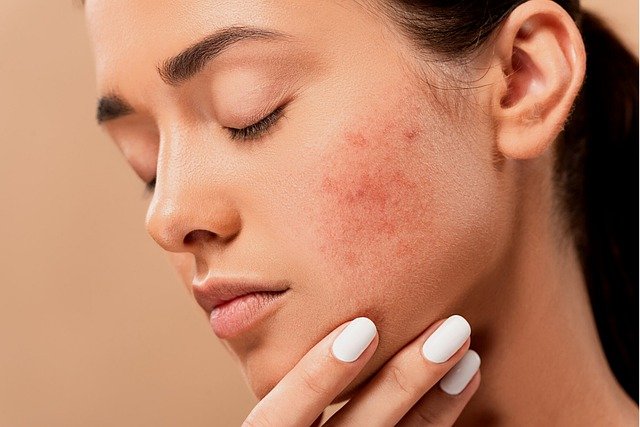
Ayurveda skin care tips
ayurveda home remedy for treating acne or pimples
Acne vulgaris is a word that is used to describe an inflammatory skin condition. Acne vulgaris is a common skin condition that affects 85 percent to 100 percent of people at some point in their lives. Pimples, whiteheads, blackheads, and zits are all terms used to describe acne vulgaris.
A clogged pore is the beginning of every pimple. A hair follicle has a sebaceous (oil) gland in each of our pores, which plays an important role in skin health. The difference between acne and pimples is that Acne is a disease, and pimples are one of its signs. Acne is a skin disorder that affects the hair follicle and the oil gland.
When the sebum that is oil and the dead cells of the skin, come together, they plug the follicles and this plug attracts the bacteria’s and these bacteria Guess cause inflammation and redness.
Acne vulgaris breakouts are most likely to appear on the skin’s surface areas with the most hair follicles. This covers the back, the face, and the upper chest.
causes of acne or pimples
According to Ayurveda the main cause is Agni deprivation, which causes an imbalance of all three doshas, particularly Pitta, which further vitiates the blood and fat tissues.
Hormone changes, excess sebum in the pilosebaceous units, and, in rare circumstances, heredity, nutrient deficiency, External factors such as dandruff, pollution, eating habits, smoking, and alcohol, lifestyle disorder, stress anxiety,Irritable Bowel Syndrome are also leads to the Acne or Pimple.
The tendency of acne also about the food habits, suppose, we can indeed be a deficiency that is B2 B3. B12 deficiency also leads to pimples.
Natural Remedies For Acne or Pimples
We say in Ayurveda, don’t put anything on your skin which you can not eat, do not put it on your face because through your skin you are eating actually. The easiest way to prevent acne vulgaris is to keep your skin oil-free and clean.
Diet & Lifestyle Advice
- Avoid spicy and oily foods
- Consume a greater variety of fresh fruits and vegetables.
- Increase intake of water
- Wash your face using soap-free herbal face washes regularly.
- Avoid the use of face cosmetics
- Avoid squeezing the acne lesions.
- Under the supervision of an Ayurveda physician, take an Ayurveda rejuvenation treatment once every 2-3 months to cleanse the inside system.
Honey
Honey is a very good strong moisturiser. It keeps your skin moist and so that skin always remains soft apply a few drops of Honey on pimples. Just rub it, keep for 10 minutes and then rinse it with warm water. That would be very good.
Aloe vera
Second aloe vera would help reducing inflammation. It would help. Reducing bacteria’s removing bacteria’s from your skin and allow the skin to heal. That’s ready. Well, take a little aloe vera gel. Add turmeric and apply on the face Stay for some time.
This combination helped to remove excess oil from your skin and it helps to give good health to your skin.
Yogurt and black pepper
Another one is yogurt and black pepper, black pepper, and yogurt on the face, keep it for some time and then massage it and wash it out. After 10-15 minutes, black pepper is extremely effective in raising oxygen levels. It aids in the removal of inflammation, infections, and provides more oxygen to your skin, all of which aid in the treatment of acne and pimples.
Amla Juice (Indian Gooseberry)
Amla juice should be consumed regularly. When it comes to skincare, Fresh amla juice is claimed to provide 20 times the amount of vitamin C . Vitamin C is a natural antioxidant, which helps to prevent Acne.
Triphala
Triphala is a well-known Ayurvedic skin remedy. It balances the three doshas (Vata, Pitta, and Kapha), detoxifies the entire body, fights bacteria, and aids in the treatment of acne. Every morning, take 1 tsp. Triphala with hot water (or) on an empty stomach.
Neem Leaves
The most efficient and frequently used Ayurvedic acne treatment is neem leaves. Apply neem paste to the affected area, wait 20 minutes for it to dry, and then wash it off with water.
Disclaimer: The first step is to seek the advice of a qualified Ayurvedic physician for a more precise diagnosis and therapy.
You can attempt these home remedies and ideas if you don’t have access to an Ayurvedic practitioner. Results may vary depending on body type, climate, and other factors.

Leave a Reply